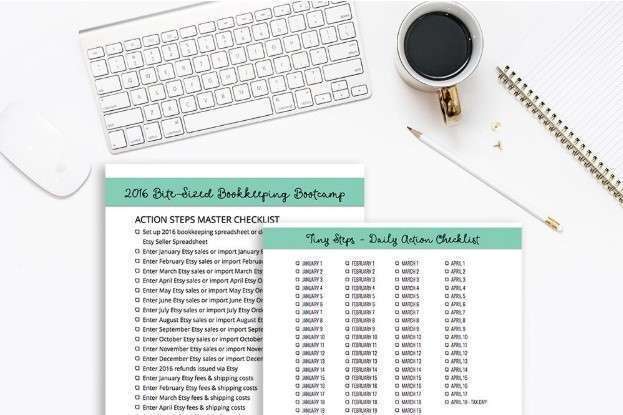Unearned Revenue Journal Entry
Since unearned revenue is a liability, will it be recorded as a debit or credit? In this article, we will discuss, unearned revenue, debit, credit and the correct journal entry for unearned revenue. Later on, when the business has actually provided the goods or services, an adjusting journal entry will be made. The balance of the unearned revenue account will then be reduced with a debit entry and then the balance in the revenue account will be increased with a credit entry. In such cases, the unearned revenue will appear as a long-term liability on the balance sheet. Even though revenue was made, unearned revenue will not be entered into the company’s income statement.
Unearned Revenue in the Books
Unearned revenue liability arises when payment is received from customers before the services are rendered or goods are delivered to them. According to revenue recognition principle of accounting, an inflow of cash from customers or clients can’t be regarded as revenue until the underlying goods or services are actually provided to them. Such an unearned revenue example can be beneficial to the company in the sense that the early receipt of cash flow can be used for business activities like paying interest on debt and purchasing more inventory. Also, the seller tends to have the cash to perform the required services that have been paid for.
Unearned revenue example in a balance sheet
Debit The debit to accounts receivable reflects the amount invoiced and due from the customer under the terms of the contract. This adjustment continues each month until the entire $12,000 has been recognized as earned revenue. In this situation, unearned means you have received money from a customer, but you still owe them your services. Smart Dashboards by Baremetrics make it easy to collect and visualize all of your sales data.
Step 2: Recognize revenue over time as obligations are fulfilled
- Closing entries are also made after adjusting entries, which are used to update accounts before financial statements are prepared.
- Certain contracts and customer agreements can also contain provisions stating contingencies where an unexpected event can provide the customer with the right to receive a refund or cancel the order.
- Therefore, businesses that accept prepayments or upfront cash before delivering products or services to customers have unearned revenue.
- First, since you have received cash from your clients, it appears as an asset in your cash and cash equivalents.
- Since it is a cash increase for your business, you will debit the cash entry and credit unearned revenue.
- A subscription-based business charges customers on a recurring basis for continued access to a product or service.
That is, when the business later delivers the good or service owed to the customer, the unearned revenue account is decreased by a debit entry and the revenue account is increased by a credit entry. Since many businesses record revenue using the accrual system of accounting, revenue will only be recognized when the goods or services have been delivered to the customer. Sales revenue is recorded as unearned revenue in the financial records when money is received from a customer for goods or services that have not yet been delivered but will be delivered at a later date. In as much as unearned revenue is treated as a liability in the books, it is usually advantageous to the seller from a cash flow perspective. The seller tends to have the cash to perform the required services that have been paid for.
This process occurs after all regular transactions have been recorded and adjusting entries have been made for the accounting period. This ensures that the company’s financial performance is accurately reflected in the financial statements. Securities and Exchange Commission (SEC) sets additional guidelines that public companies must follow to recognize revenue as earned. I’m not sure exactly what your question is, but if a company has unearned revenue, they will debit cash and credit the unearned revenue liability. When the revenue is finally earned, the liability is debited and revenue (which goes through retained earnings) is credited.
- Under IRS Section 451, certain prepayments may be taxable in the year they are received.
- However, in each accounting period, you will transfer part of the unearned revenue account into the revenue account as you fulfill that part of the contract.
- When a customer prepays for a service, your business will need to adjust its unearned revenue balance sheet and journal entries.
- This is money paid to a business in advance, before it actually provides goods or services to a client.
- It is treated as a liability account because the revenue has not been earned and represents something (be it products or services) that is owed to a customer.
Deferred revenue vs. unearned revenue
He has been a manager and an auditor with Deloitte, a big 4 accountancy firm, and holds a degree from Loughborough University. Many professional service providers, such as law firms, marketing agencies, consultants, and IT service providers, require clients to pay a retainer before work begins. A retainer is an upfront fee that ensures the client has access to the service provider for a certain period. Retailers also use prepayments is unearned revenue debit or credit for high-demand items, such as new smartphones, gaming consoles, and luxury goods. This model helps companies predict demand, manage supply chains, and secure funds before production is complete.
These are are all various ways of referring to unearned revenue in accounting. Under IRS Section 451, certain prepayments may be taxable in the year they are received. Businesses that collect advance payments for goods, long-term service contracts, or subscriptions must track revenue carefully to avoid tax errors. Failing to record unearned revenue correctly can lead to misstated earnings, compliance issues, and regulatory fines.
Subscription-based businesses, service providers, and companies handling pre-orders update their unearned revenue accounts monthly, quarterly, or as obligations are met. The accounting equation above appears in the exact structure of a balance sheet. The asset account in a balance sheet has a natural debit balance that offsets the natural credit balance of liabilities and equity accounts. When a company receives prepayment for goods or services, the company incurs unearned revenue which automatically increases the company’s current liabilities. Liabilities and equity usually have credit balances that are increased with a credit entry. Therefore, unearned revenue as liability will be a credit entry and its account balances in a T-account will be on the right-hand side of the ledger.
Temporary accounts track financial activity for a single accounting period and include revenue accounts, expense accounts, and dividend accounts. These accounts accumulate transactions throughout the period but must be reset to zero at the end of each accounting cycle. Unearned revenue is more likely to happen for businesses that operate in certain fields due to the nature of products or services being delivered to clients.
Unearned Revenue Recognition
More specifically, the seller (i.e. the company) is the party with the unmet obligation instead of the buyer (i.e. the customer that already issued the cash payment). Suppose a SaaS company has collected upfront cash payment as part of a multi-year B2B customer contract. Since they overlap perfectly, you can debit the cash journal and credit the revenue journal.
In this case, the company ABC Ltd. needs to account for the $4,500 advance payment that is received from the client as the unearned revenue because it has not performed service for the client yet. Companies with high operational costs, such as manufacturing, construction, and professional services, use advance payments to cover expenses before delivering goods or completing work. We see that the cash account increases, but the unearned revenue liability account also increases. Per accrual accounting reporting standards, revenue must be recognized in the period in which it has been “earned”, rather than when the cash payment was received.
As the prepaid product or service is delivered to the customer over time, it is then recognized as revenue and recorded on the income statement. You record prepaid revenue as soon as you receive it in your company’s balance sheet but as a liability. Therefore, you will debit the cash entry and credit unearned revenue under current liabilities. After you provide the products or services, you will adjust the journal entry once you recognize the money. Unearned revenue is a liability to the business, so its initial entry would be a credit entry. This journal entry will show that the business has an influx of cash that has been earned on credit.
Unearned revenue is usually disclosed as a current liability on a company’s balance sheet. This changes if advance payments are made for services or goods due to be provided 12 months or more after the payment date. This means the business earns $10 per issue each month ($120 divided by 12 months).
In some industries, the unearned revenue comprises a large portion of total current liabilities of the entity. For example in air line industry, this liability arisen from tickets issued for future flights consists of almost 50% of total current liabilities. Let’s assume, for example, Mexico Manufacturing Company receives $25,000 cash in advance from a buyer on December 1, 2021. The agreement pertaining to this transaction stats that the company must manufacture and provide goods to the buyer on January 15, 2022 against the prepayment received from him on December 1, 2021.
Each activity in a publisher’s business strategy can benefit from the resulting cash flow of unearned revenue. If the service is eventually delivered to the customer, the revenue can now be recognized and the following journal entries would be seen on the general ledger. Initially, the total amount of cash proceeds received is not allowed to be recorded as revenue, despite the cash being in the possession of the company. As seen in Tesla’s balance sheet above, deferred revenue (unearned revenue) is listed under liabilities as a current liability.
As an example, we note that Salesforce.com reports unearned revenue as a liability (current liabilities). You will, therefore, need to make two double-entries in your business’s records when it comes to unearned revenue, once when it is received, and again when it is earned. After James pays the store this amount, he has not yet received his monthly boxes, so Beeker’s Mystery Boxes would record $240 as unearned revenue in their records. Every business will have to deal with unearned revenue at some point or another.


